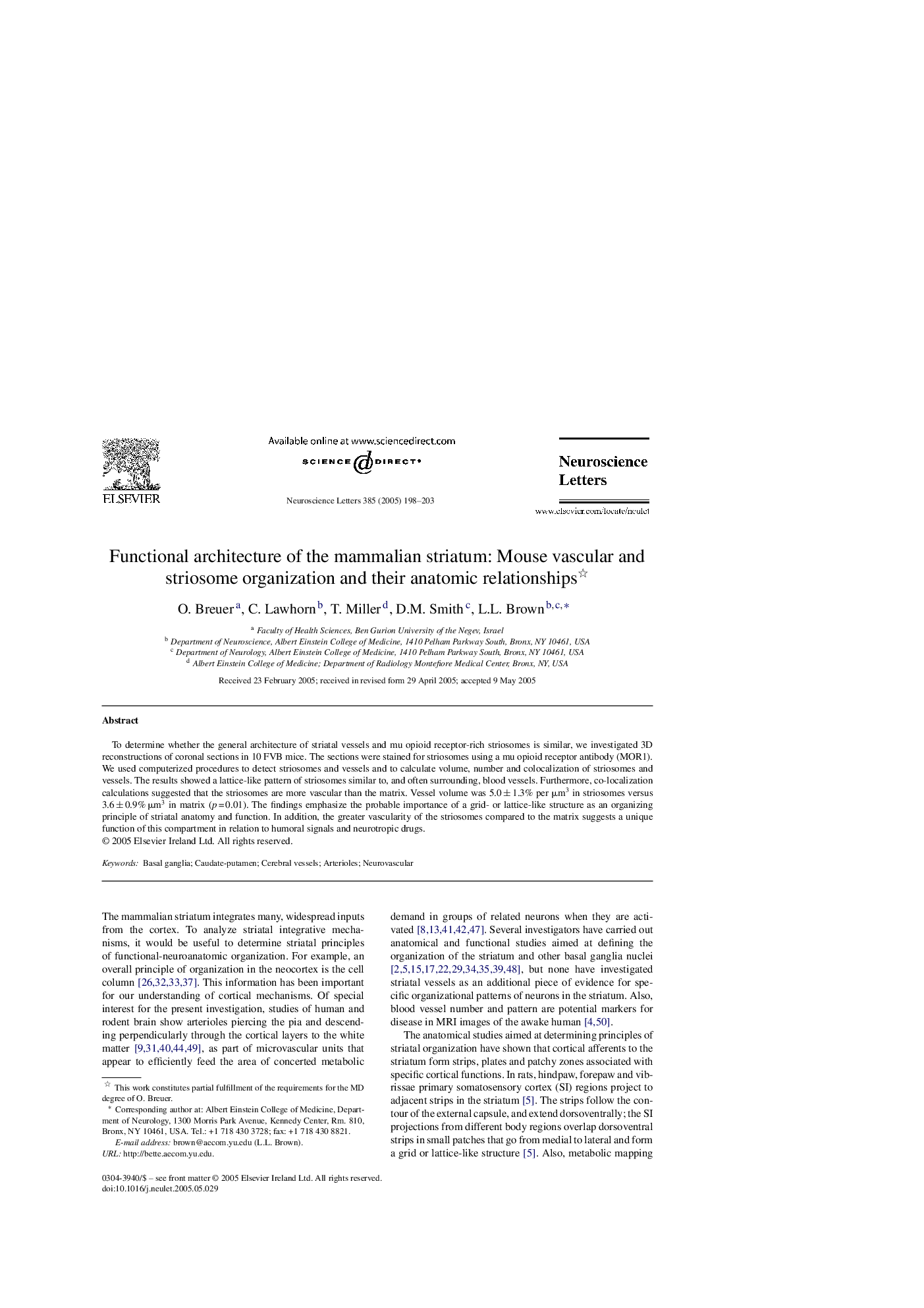| Article ID | Journal | Published Year | Pages | File Type |
|---|---|---|---|---|
| 9429108 | Neuroscience Letters | 2005 | 6 Pages |
Abstract
To determine whether the general architecture of striatal vessels and mu opioid receptor-rich striosomes is similar, we investigated 3D reconstructions of coronal sections in 10 FVB mice. The sections were stained for striosomes using a mu opioid receptor antibody (MOR1). We used computerized procedures to detect striosomes and vessels and to calculate volume, number and colocalization of striosomes and vessels. The results showed a lattice-like pattern of striosomes similar to, and often surrounding, blood vessels. Furthermore, co-localization calculations suggested that the striosomes are more vascular than the matrix. Vessel volume was 5.0 ± 1.3% per μm3 in striosomes versus 3.6 ± 0.9% μm3 in matrix (p = 0.01). The findings emphasize the probable importance of a grid- or lattice-like structure as an organizing principle of striatal anatomy and function. In addition, the greater vascularity of the striosomes compared to the matrix suggests a unique function of this compartment in relation to humoral signals and neurotropic drugs.
Related Topics
Life Sciences
Neuroscience
Neuroscience (General)
Authors
O. Breuer, C. Lawhorn, T. Miller, D.M. Smith, L.L. Brown,
